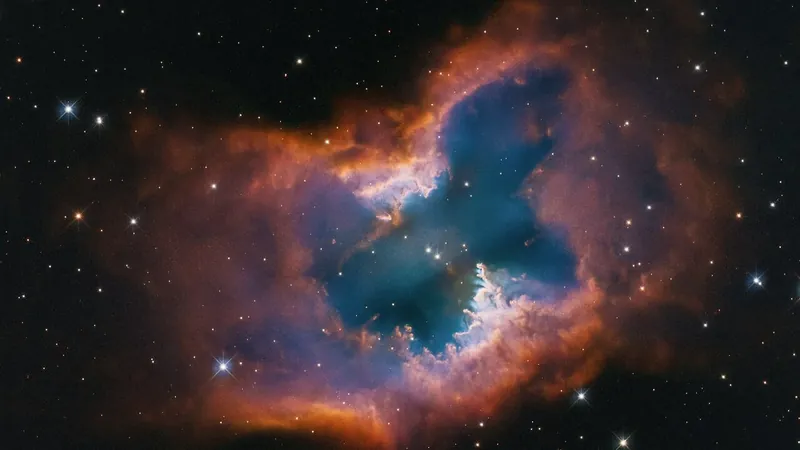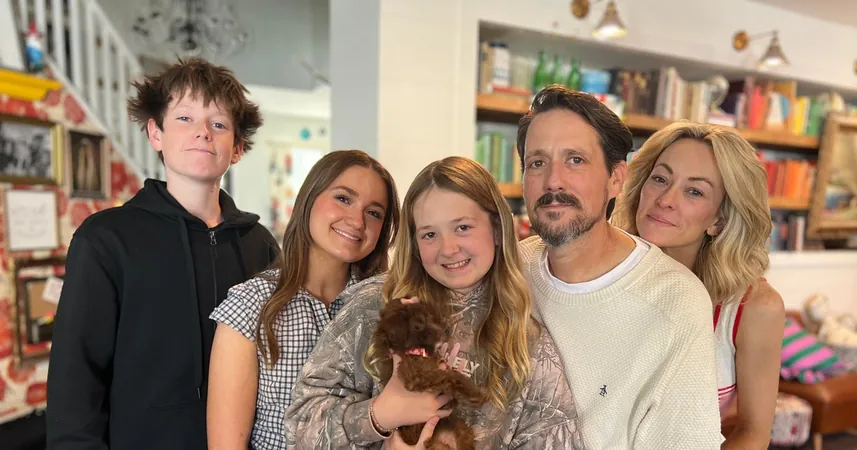
Hubble's Stunning 35th Anniversary: Captivating Snapshots of Mars and Celestial Wonders
2025-04-24
Author: Wei
The Hubble Space Telescope is turning 35, and it's marked the occasion with a dazzling array of new images that celebrate its legacy of cosmic exploration.
Since its launch on April 24, 1990, aboard the space shuttle Discovery, Hubble has redefined our understanding of the universe. Operating above Earth's atmospheric distortions, it captures breathtaking views of the cosmos, revealing details that ground-based telescopes could only dream of.
Over these three and a half decades, Hubble has made nearly 1.7 million observations and has been the basis for over 22,000 scientific papers. Its vaults now hold more than 400 terabytes of invaluable data. Demand for time on the telescope remains fierce, with requests outnumbering available slots six to one.
As officials from the European Space Agency (ESA), which collaborates with NASA on the Hubble mission, put it: "Hubble's legacy is a bridge between our past and future knowledge of an exquisitely vibrant universe. No previous generation had such vibrant views of space, reaching back almost to the dawn of time."
A Frosty Portrait of Mars
Hubble's latest images showcase a frosty, seasonal Martian landscape, captured last December from about 60 million miles (98 million kilometers) away. As spring arrives in Mars' northern hemisphere, the planet's atmosphere is adorned with wispy water-ice clouds glowing under ultraviolet light.
The striking visuals feature the Tharsis plateau—home to the colossal Olympus Mons, the tallest volcano in the solar system—towering majestically above the Martian clouds, while evening clouds hover over the prominent "shark fin" shape of Syrtis Major.
A Celestial Moth from a Dying Star
Among the standout images is NGC 2899, a stunning planetary nebula that resembles a moth. Located about 4,500 light-years away in the southern constellation of Vela, this glowing celestial cloud is sculpted by powerful stellar winds and radiation from a dying star at its heart.
Two white pinpoint stars can be seen near the center, suggesting that they might also play a role in shaping the gas, with the nebula's gaseous protrusions all seemingly oriented towards these stars.
Dark Clouds Dance in the Rosette Nebula
A mesmerizing, close-up view of the Rosette Nebula, a stellar nursery 5,200 light-years away, reveals dark clouds of hydrogen and dust silhouetted against its vibrant backdrop. These clouds are not stationary; they are being sculpted and eroded by the intense radiation from a cluster of massive stars at the nebula's core.
A young star nestled within a prominent dark cloud is fierce, jetting out streams of superheated plasma that collide with the surrounding material and create captivating shock waves, lighting up the area with a radiant red hue.
A Spiral Galaxy's Starbirth Symphony
Hubble also peered deep into space to reveal the barred spiral galaxy NGC 5335, located 225 million light-years away in Virgo. This galaxy exhibits a "flocculent" structure, characterized by uneven bursts of star formation scattered across its disc.
Unlike many spiral galaxies, which feature distinct arms, NGC 5335 has fainter structures spiraling outward from its center. A prominent bar of stars and gas exists in this galaxy's bright nucleus, channeling material to foster new star births, a process that takes billions of years.


 Brasil (PT)
Brasil (PT)
 Canada (EN)
Canada (EN)
 Chile (ES)
Chile (ES)
 Česko (CS)
Česko (CS)
 대한민국 (KO)
대한민국 (KO)
 España (ES)
España (ES)
 France (FR)
France (FR)
 Hong Kong (EN)
Hong Kong (EN)
 Italia (IT)
Italia (IT)
 日本 (JA)
日本 (JA)
 Magyarország (HU)
Magyarország (HU)
 Norge (NO)
Norge (NO)
 Polska (PL)
Polska (PL)
 Schweiz (DE)
Schweiz (DE)
 Singapore (EN)
Singapore (EN)
 Sverige (SV)
Sverige (SV)
 Suomi (FI)
Suomi (FI)
 Türkiye (TR)
Türkiye (TR)
 الإمارات العربية المتحدة (AR)
الإمارات العربية المتحدة (AR)